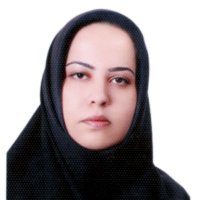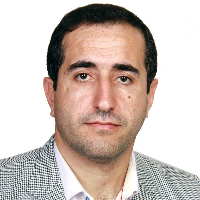Feasibility of Developing Sport Tourism in Ardabil (Case Study: Alvares Ski Resort)ki Resort)
Author(s):
Abstract:
Winter sports tourism is a key economic factor in many mountainous regions worldwide. This type of tourism is considered to be one of the most important and profitable that has become more popular in recent years. Ski resorts in the present era have become one of the areas of tourism planning and management.In other words, this kind of tourism has helped create local businesses due to its many enthusiasts and has turned into a strategy for economic growth and development. Iran's Ardabil province is in a relatively good position in terms of winter sports and mineral waters attractions. The authorities need to use these potentials for developing winter sports.The aim of this study is to measure sports tourism developmentwith recreational complex and ski resort of Alvaras Sarein from the perspective of tourists. Methodology The statistical population of this study is sports and non-sports tourists who traveled to the area at least once, as well as tourism and sportsexperts in the province of Ardebil. Due to the limited statistical population, Morgan Table was used to determine the sample size. A total of 380 questionnaires were distributed in which 318 questionnaires were approved and were collected for analysis. The data collection method was library and a researcher-made questionnaire. In order to determine the validity of the questionnaire, the views of professors and experts in the field of tourism and sportswere taken. To determine the reliability of the questionnaire, Cronbach's alpha coefficient was used. In order to analyze the data and research objectives, structural analysis equations for measuring variables were used in the smart pls software environment. In this research, effective variables for the development of sport tourism in the Alvares ski resort included infrastructure, environmental, sports factors and management factors, each of which includes a group of indices. Results and Discussion The results of load factor analysis show that all of the indices are well explained by the research structure. Indices related to the use of modern technologies (0.809), the existence of clubs and provincial league (0.801), cultural programs and native festivals in sports events (0.818), variety of products and sports activities (0.838) and the presence of a guide and translator on site (0.814) have had the most explanatory power in the structure. Whereas distance indices from the airport (496/0), safety (511/0), signs and indications for guidance (561/0), locker room and storage and heating system (591/0), distance to the ski resort (527/0). Facilities and equipment intended for the disabled (0.508), wind speed in the region (0.551), natural landscapes (0.772), rivers and hot springs (0.483),the climate of the region (0.580), cleanliness from the point of view of waste accumulation (0.548), distance to centers (0.592), booths and commercial stores (0.881), vegetation and green spaces (536/0), the presence of sports shops (516/0), travel agency services (0/510), staff specialization and performance (0.566), the overall level of prices (0.7766) and security (0.445) have the least power of structural explanation. Also, the results of their path coefficient showed that there is a causal relationship between variables of the research. The intensity of this relationship between the infrastructure variable and the variable of sport tourism development (0.446) is more than other variables. T-value was used to measure the relationship between the variables. The results show that there is a significant relationship between infrastructure factors and the variable of sport tourism development at the 95% and 99% confidence level. The amount of the T-value between the two variables of sports factors and sport tourism development is (1.85), which shows that at 90% confidence level, there is a significant relationship between the two The amount of T-value between environmental factors and sport tourism development is (4.40), which shows a significant relationship between the two at 95% and 99% confidence level. Also, T-value between managerial factors and development of sport tourism is (3.74) which show a significant relationship at a confidence level of 95% and 99%, respectively. Conclusion The results obtained through the analysis of structural equations show that all indicatorsmeasuring the variables well explained the research structure and the indices related to the use of new technologies (0.809), the existence of clubs and provincial league (0.801), cultural programs and festivals, the native sporting events (0.818), the variety of products and activities (0.838), and the presence of local guidance and translator (0.814) had the most explanatory power in the structure. The path coefficients of the research variables indicate a direct causal relationship between the variables of research and the intensity of this relationship between the infrastructure variable and the variable of sport tourism development (0.446) is more than other variables. The fitting of measurement, structural and general models also confirms the conceptual model of research.
Keywords:
Language:
Persian
Published:
Journal of Spatial Planning, Volume:22 Issue: 4, 2019
Pages:
27 to 54
https://magiran.com/p1950587
سامانه نویسندگان
مقالات دیگری از این نویسنده (گان)
-
Identification and analysis of key factors affecting the development of Sustainable Ecotourism in Lut Desert
Leila Jalalabadi *, Mehdi Ramezanzade Lasboyee
journal of urban tourism, -
Factors affecting the quality standard of accessible sports tourism
Fatemeh Nasrollahzadeh, Saeid Tabesh *, Mehdi Ramezanzadeh
Journal of Tourism Management Studies, -
Evaluation and Explanation of the Criteria for Establishing Heritage Villages in World Heritage Sites (Case Study: Historical Complex of Firouzabad County)
Pedram Faehadi, Mohammadhasan Zaal *,
Journal of Tourism Management Studies, -
Analysis Of The Effectiveness Of Hedonistic Motivations In The Continuous Use Of Tourist Destinations (Case Study: Mazandaran Province)
Mehri Donyavi, Mehdi Ramezanzadeh Lasebouei *,
Journal of tourism and development,



